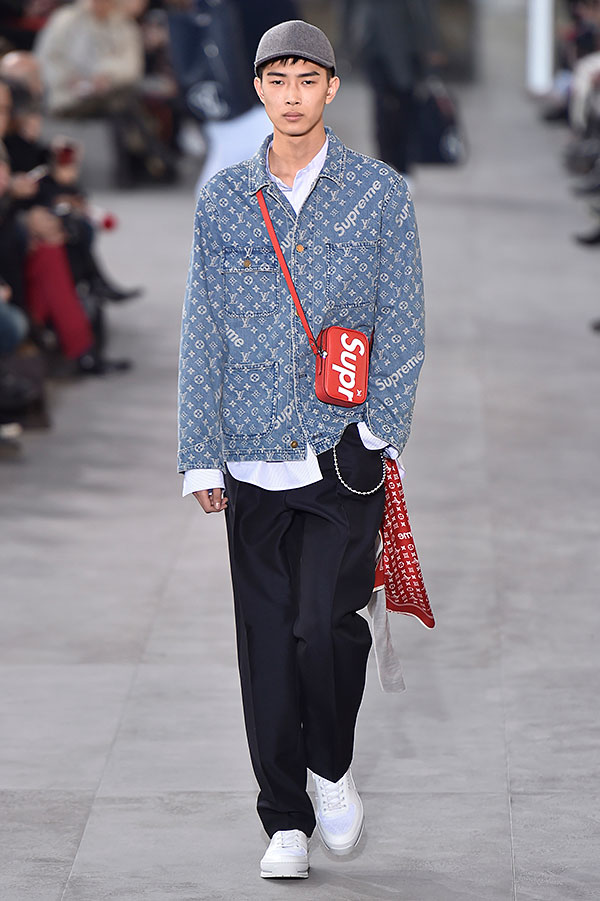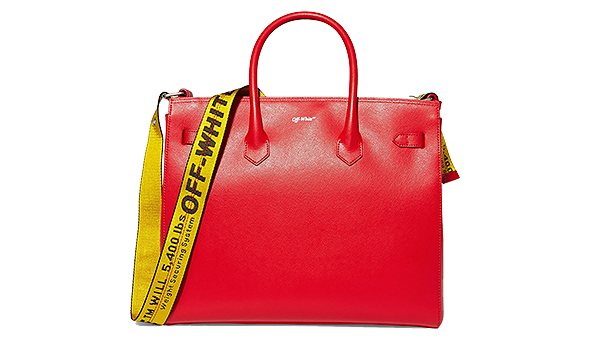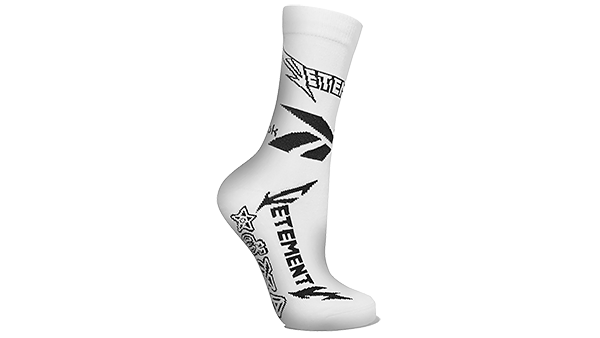Do the logo-motion: the return of visible branding

Simply sign up to the Life & Arts myFT Digest -- delivered directly to your inbox.
The logo is back. At Gosha Rubchinskiy’s SS17 show, Russian teens sported branded garments made in collaboration with the labels of the 1980s — Fila, Kappa and Sergio Tacchini. At Dolce & Gabbana, “fake” logo T-shirts were made a central part of the women’s SS17 collection. At Balenciaga AW17, designer Demna Gvasalia emblazoned a sweater with the logo of the luxury conglomerate group, Kering, which owns the brand.
Alessandro Michele has been instrumental in reviving the logo at Gucci. His first look for the house on becoming creative director in January 2015 featured a belt fastened with giant interlocking Gs. The logo was first made a status symbol under Tom Ford in the early 1990s. Back then, it was a symbol of raw materialism. By contrast, Michele’s new take has been faded and antiqued to lend it a vintage appeal. For his cruise collection, Michele designed a soft-washed T-shirt with printed logo detail. Innocuous enough, until you discover it cost £400.
Net-a-Porter ordered 1,000 T-shirts and it sold out globally in just 10 weeks. “It was our top investment for pre-spring summer and due to its phenomenal performance we are introducing two new colourways for next season,” says Lisa Aiken, the site’s retail fashion director. She credits Gucci and Dolce & Gabbana for having kicked off the current logo trend “by reworking counterfeit tees to create ‘genuine fakes’. [The French brand] Vetements is another power player; we sold 500 pairs of their logoed sports socks (£60) in just one week, which is incredible.”
London menswear designer Christopher Shannon reinterpreted iconic brand graphics as miserabilist slogans for AW17 — Calvin Klein became Constant Stress (pictured below) while Timberland became Tumbleweed. “I’ve been using logos since my MA collection in 2009,” he says. “At the time, it really irked people, everyone was so busy with slim tailoring that loud graphics seemed the opposite.”

Seven years later, Shannon says: “There isn’t so much snobbery around it. Plus it’s an effective way to make a statement and reads well online — no one seems to look past that at the moment.”
The death of the logo in the late 1990s was largely a feature of its own success. The logo became all too ubiquitous in the early 90s when brands used the logo to prop up licenses, especially in foreign markets, and sell diffusion lines.
“In the past, the logo was about duty-free kind of stock, and slapping your name on it”, says Robert Forrest, a fashion consultant who has worked with Giorgio Armani and Calvin Klein, of that era’s overdependence on its initials. “Now, it’s become cool to have logos used in the main high fashion collection — like when they showed Obsession perfume logos on the Calvin Klein runway for mens’ AW14.”
The economic crash in 2008, and the minimal stealth-wealth era of fashion that coincided with those times, also spelt doom for visible branding. “After the crisis of 2008 there was a premium for very expensive products that didn’t look obviously expensive,” says Geoffroy de La Bourdonnaye, president of French label Chloé. The luxury market was “all about non-conspicuous consumption”.
That market now seems to be changing, but de La Bourdonnaye sees the return of the logo as only a passing “trend”. Under his watch, Chloé has resisted the urge to brand products, even retiring logos where possible. He points to the unbranded Carlina sunglasses as an example of his strategy: “You do not need the logo to recognise they are Chloé,” he says. “It’s easier, if you have a logo or a strong brand, to slap it on stuff that you can find anywhere else. That’s not the route we are taking.”
In the 1980s and 1990s, logos served as a symbol of wealth. But in today’s fashion culture its meaning is more complex. As consumers have become more aware of their ability to “curate” an online lifestyle, logos have become subtle badges of belonging. Damien Paul, head of menswear at matchesfashion.com, sees the logo’s rehabilitation as something for those in the know, rather than those aspiring to look in the know.
“Influential buzz brands like Vetements and Off-White have made their own names central to the appeal of their clothing,” he says. “And this has the effect of identifying the wearer as part of a particular designer tribe. It’s a concept that is also being championed at more established houses like Balenciaga and Balmain, particularly on entry-level products, such as caps and T-shirts, which entice a younger and social media-savvy crowd.”
In turn, today’s designers are using logos in a more playful, knowing way: when Maria Grazia Chiuri made her debut at Dior, she did so with bags and bra straps boldly branded with the words “J’adior”, a play on the “J’Adore Dior” slogan created by John Galliano during his tenure at the house in the late 1990s. The message received was that her Dior would be inclusive, respectful of its design past and commercially savvy.
Brand consultant and sportswear expert Gary Warnett credits much of the current logo fetishism to the influence of Dapper Dan, owner of the legendary Harlem boutique in New York, which opened in 1982, and sold fake monogrammed jackets, coats and tracksuits. The shop closed in 1992 when Fendi officials spotted Mike Tyson in a Dan creation. But while Dan’s influence was once despised by the houses, his vision was eerily prescient. Today, Fendi sells ostentatious branded furry pool slides and scarves that perfectly recall Dan’s flamboyant fakes. Kim Jones, the artistic director of Louis Vuitton menswear, credited Dapper Dan as a reference in his AW17 notes to introduce a logo-heavy collection made in collaboration with skate brand Supreme (pictured below).

Robert Forrest, meanwhile, argues that the prominence of the logo has arisen with a more homogenised market. Why design something new when you simply can stick a label on it? “You used to recognise an Ossie Clark, because you knew the cut of the dress,” argues Forrest. “Likewise with Sonia Rykiel. Most brands don’t have that any more, so they hang their name on it. The design aesthetic is less valued than it used to be.”
It’s telling that when Raf Simons took over at Calvin Klein, a brand that has long relied on logoed products, he called on acclaimed graphic designer Peter Saville to reshape the branding. They dubbed the new logo “a return to the spirit of the original”, and replaced the lower case with a new font in capitals and with each letter closer together. A new logo, for the new, informed logomaniacs. It was the ultimate reboot.
Shopping: Logos
Moschino

T-shirt, £121, farfetch.com
Gucci

Sweatshirt, £1,220, gucci.com
Balenciaga

Cap, £185, Dover Street Market
Off-White

Tote, £1,360, net-a-porter.com
Vetements

Socks, £60, net-a-porter.com
Dior

Sunglasses, £589, harveynichols.com
Photographs: Catwalking
Comments